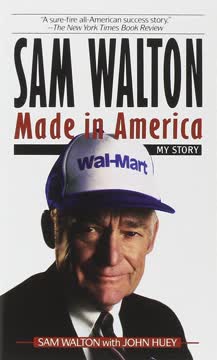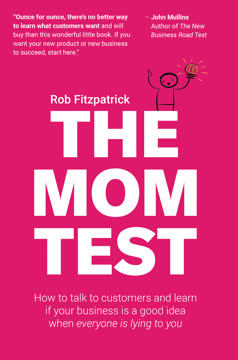Key Takeaways
1. Master the Art of Storytelling to Captivate Your Audience
The world is roiling with stories… yet most people refuse to see them.
Observe and collect stories. As a marketer, your ability to tell engaging stories is crucial. Start by paying attention to the world around you, even in mundane situations like elevator rides or airport lounges. These everyday moments are filled with potential narratives that can captivate your audience.
Use stories to make your point. In advertising, a good story will make your point with stunning power. People are hard-wired to crave stories, especially those that are relevant and relatable. When crafting your marketing message, use anecdotes and narratives to:
- Illustrate the benefits of your product or service
- Create emotional connections with your audience
- Demonstrate your understanding of their needs and desires
- Make your message more memorable and shareable
Remember, the key is to translate these observations into compelling copy that breathes reality and adventure into your sales pitch.
2. Embrace Your Inner Punk to Stand Out in Marketing
You are a punk rocker, too, in your own way.
Challenge the status quo. In marketing, being a "punk" means having the courage to challenge conventional wisdom and stand out from the crowd. This attitude can help you create marketing campaigns that are edgy, authentic, and memorable.
Be passionate and honest. The punk ethos in marketing is about:
- Injecting passion and raw energy into your advertising
- Being honest and straightforward with your audience
- Taking risks and trying new approaches
- Refusing to conform to bland, safe marketing tactics
By embracing this mindset, you can create marketing that grabs attention, shakes up your industry, and resonates deeply with your target audience. Remember, it's not about being offensive or shocking for its own sake, but about bringing genuine enthusiasm and innovation to your marketing efforts.
3. Overcome Writer's Block by Understanding the Creative Process
Professional copywriters (at least the successful ones) never stare at the blank page, wondering "how to begin".
Prepare before writing. Writer's block is often a result of poor preparation. Before you start writing, immerse yourself in research about the product, the prospect, and the market. This knowledge will give you the foundation you need to start crafting your message.
Break down the writing process. Instead of trying to write your ad in one linear flow, approach it in sections:
- Start with bullets points highlighting key features and benefits
- Draft different versions of your headline
- Work on the body copy in chunks
- Craft your call to action separately
Remember, great copy often comes from extensive rewriting and refining. Don't expect perfection in your first draft. The key is to get your ideas down, then shape and polish them into a compelling sales message.
4. Harness the Power of Secrets in Your Sales Pitch
One secret, in a 12-page letter dense with other sales points. Igniting the passionate "sweet spot" of the reader.
Use secrets to create intrigue. People are naturally drawn to the allure of secrets. In your marketing, use this psychological trigger to capture attention and create a sense of exclusivity.
Balance revelation and mystery. When using secrets in your copy:
- Hint at valuable information your audience doesn't know
- Create a sense of urgency around discovering these secrets
- Reveal enough to prove your credibility, but maintain some mystery
- Use phrases like "little-known fact" or "insider information" to pique curiosity
Remember, the power of secrets lies in their ability to make the reader feel special and privileged. Use this tactic responsibly to deliver genuine value, not just empty hype.
5. Simplify Complex Ideas for Maximum Impact
KISS -- keep it simple, stupid.
Break down complex concepts. As a marketer, your job is to translate complex ideas into simple, digestible messages. This is especially crucial when dealing with technical products or services.
Use clear language and examples. To simplify your message:
- Avoid jargon and technical terms unless absolutely necessary
- Use analogies and metaphors to explain difficult concepts
- Break information into bullet points or numbered lists
- Provide concrete examples that your audience can relate to
Remember, simplicity doesn't mean dumbing down your message. It means presenting information in a way that's easy to understand and remember. Your goal is to make your audience feel smart, not to show off how smart you are.
6. Learn from Failure and Keep Moving Forward
I made massive, humiliating mistakes from the very first day of my new career… but rather than slinking off to lick my wounds, I dissected what I did wrong, figured out a better way to do it, and blithely strode back out to take another beating.
Embrace failure as a learning opportunity. In marketing, as in life, failure is inevitable. The key is to use these failures as stepping stones to success.
Analyze and adapt. When you face setbacks:
- Take time to analyze what went wrong
- Identify specific lessons you can learn
- Develop a plan to apply these lessons in your next attempt
- Don't let fear of failure paralyze you - keep taking action
Remember, every successful marketer has a history of failures behind them. It's not about avoiding mistakes, but about learning from them and continually improving your skills and strategies.
7. Stay Aware of Cultural Shifts but Remember Human Nature Remains Constant
Things DON'T change.
Balance innovation with timeless principles. While technology and cultural trends are constantly evolving, the fundamental aspects of human nature remain largely unchanged.
Apply timeless principles to new contexts. In your marketing:
- Stay updated on new platforms and technologies
- Understand how these changes affect consumer behavior
- But remember that core human desires and motivations (like the need for status, security, and belonging) remain constant
- Adapt classic marketing principles to new mediums
For example, while the medium for storytelling may change from print to digital to virtual reality, the power of a well-told story to captivate an audience remains unchanged. Your job as a marketer is to leverage new technologies while tapping into these timeless human needs and desires.
8. Use Specific Details to Create Compelling Headlines
Your headline should challenge the reader with specific details that don't seem to add up.
Craft intriguing headlines. The headline is often the most important part of your ad. It needs to grab attention and compel the reader to continue.
Use the "incongruous juxtaposition" technique. To create powerful headlines:
- Combine unexpected elements that create curiosity
- Use specific numbers or facts that seem surprising
- Challenge common assumptions in your industry
- Create a sense of mystery that can only be resolved by reading further
Examples:
- "How a Skinny Little Golf Genius from California Accidentally Started Hitting 425-Yard Tee Shots!"
- "How Does An Out-Of-Shape 55-Year-Old Golfer, Crippled By Arthritis & 71 Lbs. Overweight, Still Consistently Humiliate PGA Pros In Head-To-Head Matches?"
Remember, the goal is to make your headline so intriguing that the reader can't help but want to know more.
9. Balance Creativity with Practicality in Your Business Approach
Treat him like a genius who is also about to do something really, really stupid.
Respect creative genius but stay grounded. In the marketing world, it's easy to get carried away with creative ideas. However, successful marketing requires a balance between creativity and practicality.
Implement a reality check system. To maintain this balance:
- Encourage wild, creative ideas in the brainstorming phase
- But always run these ideas through a practical filter before implementation
- Consider factors like budget, target audience, and potential ROI
- Be willing to kill even brilliant ideas if they don't align with business goals
Remember, the most successful marketing campaigns are those that are not only creative but also effectively meet business objectives. Don't let the pursuit of creativity overshadow the need for results.
10. Cultivate Self-Awareness to Improve Your Marketing Skills
Get in touch with your own prior cluelessness.
Understand your own learning process. Recognizing how you've overcome your own ignorance can make you a better marketer and teacher.
Apply empathy in your marketing. Use your self-awareness to:
- Better understand your audience's perspective
- Anticipate their questions and objections
- Break down complex concepts in ways that resonate with beginners
- Create marketing messages that meet people where they are, not where you think they should be
Remember, great marketers are able to put themselves in their audience's shoes. By cultivating self-awareness and empathy, you can create more effective, relatable marketing messages that truly connect with your target market.
Last updated:
FAQ
What’s The Entrepreneur’s Guide To Getting Your Shit Together by John Carlton about?
- Comprehensive entrepreneurial playbook: The book distills John Carlton’s 30 years of marketing, copywriting, and business experience into practical advice for entrepreneurs seeking wealth, happiness, and fulfillment.
- Focus on salesmanship and psychology: It emphasizes the critical role of persuasive copywriting, understanding human motivation, and mastering the art of sales.
- Mindset and lifestyle guidance: Carlton explores the unique mindset required for entrepreneurial success, including risk-taking, resilience, and stress management.
- Real-world, actionable strategies: The book is filled with hands-on tactics, anecdotes, and proven methods for overcoming obstacles and building lasting customer relationships.
Why should I read The Entrepreneur’s Guide To Getting Your Shit Together by John Carlton?
- Learn from a marketing legend: John Carlton is a respected authority whose advice has shaped top entrepreneurs and marketers worldwide.
- No-nonsense, actionable advice: The book cuts through fluff, offering brutally honest guidance and strategies that can be applied immediately.
- Mindset transformation: It challenges readers to adopt a proactive, responsible, and resilient entrepreneurial attitude essential for thriving in business.
- Avoid common pitfalls: Carlton shares personal stories and lessons to help readers sidestep burnout, client overload, and costly mistakes.
What are the key takeaways from The Entrepreneur’s Guide To Getting Your Shit Together by John Carlton?
- Master copywriting and salesmanship: Success depends on writing compelling ads that connect with your audience’s needs and desires.
- Embrace imperfection and resilience: Carlton encourages entrepreneurs to accept mistakes, fix problems quickly, and avoid perfectionism.
- Manage stress and mindset: Stress is a self-chosen poison; learning to control it is vital for productivity and long-term success.
- Value customer relationships: Building trust and nurturing your customer base with honesty and service leads to lasting wealth and reputation.
What are the core principles of salesmanship in The Entrepreneur’s Guide To Getting Your Shit Together by John Carlton?
- Simplicity sells: The brain craves clear, emotionally charged messages that are easy to understand and act on.
- Secrets and greed motivate: People are drawn to the promise of secret knowledge and personal gain, which are powerful sales drivers.
- Get out of your comfort zone: Understanding diverse perspectives and experiences helps you bond with niche markets and sell more effectively.
- Emotional and intellectual appeal: Great salesmanship satisfies both the primal and rational sides of the customer’s mind.
How does John Carlton define and teach effective copywriting in The Entrepreneur’s Guide To Getting Your Shit Together?
- Copywriting as salesmanship in print: Carlton views copywriting as the heart of business, requiring mastery of persuasive techniques and deep customer understanding.
- Headline mastery: He teaches benefit-oriented, curiosity-driven, and incongruous headlines to grab attention and spark interest.
- Balance of skill and boldness: Effective copy combines technical craft (“chops”) with bold personality (“chutzpah”) and credible proof.
- Practice and persistence: Success comes from consistent effort, rewriting, and refining, not waiting for inspiration.
What is John Carlton’s “Copywriting Success Recipe” from The Entrepreneur’s Guide To Getting Your Shit Together?
- Four key ingredients: Salesmanship, craft, cojones (boldness), and fun are all essential for writing killer copy.
- Balance is crucial: Too much or too little of any ingredient can lead to failure; the right mix is tailored to your style and market.
- Salesmanship and craft as foundation: Deep understanding of your prospect and mastery of writing skills are non-negotiable.
- Boldness backed by proof: Confidence must be supported by evidence to avoid coming across as arrogant or untrustworthy.
How does John Carlton address stress and burnout for entrepreneurs in The Entrepreneur’s Guide To Getting Your Shit Together?
- Stress is a choice: Carlton argues that chronic stress is self-imposed and damages both health and productivity.
- Calmness over chaos: He debunks the myth that stress improves efficiency, advocating for calm, clear-headed decision-making.
- Practical stress management: Exercise, massage, meditation, and therapy are recommended tools for lowering stress and maintaining mental clarity.
- Awareness and boundaries: Recognizing stress patterns and learning to say no to time-wasters and troublemakers is essential for longevity.
What is the “Imperfect Guy’s Guide to Wealth, Love, Respect and Long Life” in The Entrepreneur’s Guide To Getting Your Shit Together?
- Life principles for success: Carlton shares a collection of practical, folk-wisdom-based advice for navigating life and business.
- Key habits and attitudes: Living below your means, avoiding debt, exercising, taking responsibility, and practicing empathy are emphasized.
- Focus on conscious choice: Success and happiness come from making deliberate choices, continuous learning, and embracing change.
- Balance and self-awareness: The guide encourages self-reflection and the courage to change direction when needed.
How does John Carlton suggest overcoming writer’s block in The Entrepreneur’s Guide To Getting Your Shit Together?
- Writer’s block as procrastination: Carlton dismisses it as an excuse rooted in fear, urging writers to start by gathering information.
- Write in sections: Breaking the process into manageable parts (headlines, bullets, close) helps build momentum.
- Embrace anxiety: Recognizing that anxiety and self-doubt are natural parts of creation allows writers to push through.
- Practice and persistence: Consistent effort, rewriting, and refining are key to overcoming blocks and achieving success.
What is “Pop-Psych Salesmanship” according to John Carlton in The Entrepreneur’s Guide To Getting Your Shit Together?
- Understanding human motivation: Pop psychology reveals that emotional and unconscious factors often drive buying decisions.
- Street-smart vs. agency science: Carlton favors practical, experience-based persuasion over overly scientific or data-driven approaches.
- Use of psychological triggers: Scarcity, social proof, and emotional hooks are essential tools for crafting compelling sales messages.
- Skepticism of data: Marketers should filter focus groups and studies through a practical lens to avoid costly mistakes.
How does John Carlton recommend using “grabbers” in direct mail and advertising in The Entrepreneur’s Guide To Getting Your Shit Together?
- Grabbers boost response rates: Physical items like dollar bills or lottery tickets attached to mailings create curiosity and increase open rates.
- Keep it simple and relevant: The grabber doesn’t need to be directly related to the product but should catch attention quickly.
- Follow up for impact: Calling prospects after sending grabbers can generate positive responses and start sales conversations.
- Turn mail into an event: “Lumpy” packages full of secrets stand out and make your offer memorable.
What are the best quotes from The Entrepreneur’s Guide To Getting Your Shit Together by John Carlton and what do they mean?
- “Just Sell The Damn Thing!” – A reminder to avoid overcomplicating your sales pitch and focus on making a clear, direct offer.
- “Stress is a self-chosen poison.” – Highlights the importance of managing stress consciously rather than letting it control you.
- “No good deed goes unpunished.” – Warns that offering favors or discounts can devalue your services and lead to less respect from clients.
- “Chops and chutzpah.” – Emphasizes the need for both skill and bold personality in effective copywriting and marketing.
Review Summary
The Entrepreneur's guide to getting your shit together. Volume one receives mostly positive reviews, with readers praising Carlton's writing style, practical advice, and storytelling ability. Many find it valuable for copywriters and marketers, appreciating the mix of life lessons and business insights. Some criticize the informal tone and structure, while others feel it's more focused on copywriting than general entrepreneurship. Overall, readers appreciate Carlton's experience and no-nonsense approach, finding the book both entertaining and educational.
Similar Books










Download PDF
Download EPUB
.epub digital book format is ideal for reading ebooks on phones, tablets, and e-readers.





